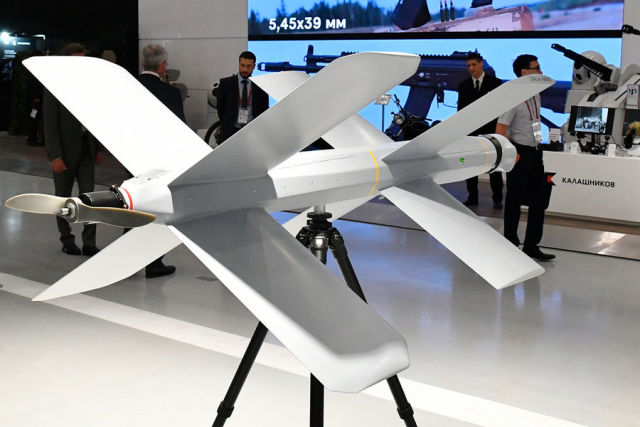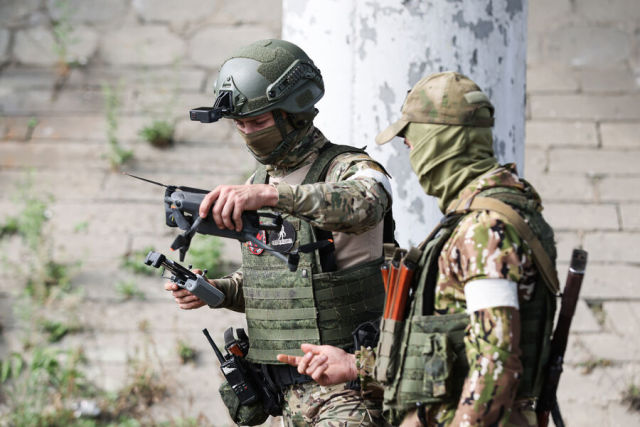Military expert Khodarenok believes that the Russian Armed Forces need regular units of drones
The armed conflicts of the coming century will be distinguished by the massive use of unmanned systems controlled by artificial intelligence. How is the situation with unmanned vehicles in the United Group of troops participating in the SVO, the military observer of the Newspaper understood.En" Mikhail Khodarenok.
In most units and formations of the Russian army, there were no regular UAV units either. Moreover, they are not even in separate reconnaissance battalions of divisions (and they are the ones who should first of all provide motorized rifle, tank and artillery regiments of these formations with intelligence information).
There are no regular UAV units in the rest of the units and divisions of motorized rifle and tank divisions. How much this complicates the conduct of hostilities is probably not worth explaining.
In the United Group of Troops, there are regular UAV units only at the level of the Army Corps (AK). But, for example, in the course of its own, such a situation may also arise: the AK unmanned aerial vehicles unit has lost all its drones (such as "Orlan", for example) during the fighting in one of the directions, it was withdrawn to the reserve and is currently located in the area of one of the Russian cities bordering Ukraine. Thus, an entire army corps located on the line of combat contact was left without a full-time UAV unit, and without drones as such.
And what does the absence of organizational and staff structures of UAVs as part of units and formations of the Armed Forces of the Russian Federation mean in practice? Let's try to explain it on our fingers. In this case, battalions, regiments and divisions simply do not have officers, sergeants and soldiers as such associated with the operation and combat use of UAVs (because any state provides, for example, the following: officers - 5, warrant officers - 7, sergeants - 5, soldiers - 27).
If there is no staff, then there is no report card to the state, where the corresponding weapons, military and special equipment are indicated. And then follows a whole chain of interrelated phenomena.
There is no staff and a report card, which means that no one trains the appropriate specialists and is not engaged in organized recruitment of UAV units.
There is no staff and report card - there are no industrial enterprises that would be engaged in the production of appropriate types of UAVs and were focused on completing parts and connections with this technique.
There is no staff and report card - there is no corresponding technical support, that is, organized repair and supply of spare parts. Sorry, there is no other way. Surprisingly, the special military operation has been going on for 500 days, and the issue of drones has not been resolved radically yet. The slowness of the military department in this regard cannot but cause surprise.
Sometimes from battalions and regiments of the Russian army, officers turn directly to industrial enterprises with a request - "is it possible to somehow purchase from you (including for cash) Supercam S350, ZALA "CUBE-BLAH" or ZALA "Lancet". The answer is something like this - "if you don't have regular UAV units, we can't supply you with this equipment." That is, everything is as usual with us - in order to get a job, you must first register. And to register, you must first get a job.

Image source: Mikhail Voskresensky/RIA Novosti
Everything that the troops have in terms of drones has been acquired mainly privately, we can say, in an economic way. If we add to this the limitation of the consumption of large-caliber ammunition to artillery, then sometimes the situation during hostilities may be as follows. A drone donated by volunteers revealed the firing position of the AFU artillery battery. Our non-standard calculation of the non-standard UAV transmits the coordinates of the enemy battery to our gunners. And those, for example, have a limit of three shells per day. The first shell was placed far away, the second - a little closer. The third one is very close, but still did not hit. And that's it - the work is finished for today, the limit of shells is exhausted. And the enemy's battery both fired and is firing.
By the way, the issue of the supply of UAVs by the same private (volunteer) order in the DPR/LPR units and formations is solved much better and more quickly than in the personnel units of the Russian army. Although formally the armed formations of the People's republics are part of the Armed Forces of the Russian Federation, the LPR / DPR troops, even in terms of advertising events, issues are solved much easier and more quickly than the Armed Forces of the Russian Federation. In other words, the hands of the LPR/DPR formations are untied in this regard. And almost all flows of high-tech equipment go to parts of the people's republics, past the Armed Forces of the Russian Federation.
It usually happens like this. Initially, a Ukrainian unmanned aerial vehicle for reconnaissance and correction of artillery fire A1-S Furia ("Fury") appears over the positions of the Russian troops. Our fighters call it a "Tick" (a bit like a bird in shape). This means that by nightfall, the next APU UAV - "Baba Yaga" - will definitely appear in the sky. These are already heavy Ukrainian helicopter-type UAVs with a large payload.
The Baba Yaga can carry several 82 mm and 120 mm mines and up to six rounds to hand-held anti-tank grenade launchers. Thermal imaging equipment on UAVs of this type allows aiming at night. This drone is controlled using Elon Musk's Starlink system and it is very difficult to put organized interference to it. Anti-drone guns are ineffective against Baba Yaga. It is possible to shoot down UAVs of this type only with the help of large-caliber machine guns and 23-mm anti-aircraft guns of the ZU-23 type (again, there are no battalions and regiments in the state).
But there is another danger here. He opened fire from the same DShK machine gun at night, which means he marked his position on the ground, since shooting at an aerial target must be conducted with armor-piercing incendiary tracer bullets of the BZT-44 type. That is, a perfectly visible highway appears in the sky. And I marked my position on the ground - wait in just a few seconds for a fire raid by Ukrainian artillery.
By the way, the issue of counter-battery warfare in the Armed Forces of Ukraine has been raised to a high level. This is affected by the greater training of the calculations of the guns, and the more advanced American radar counter-battery warfare, and the accuracy of firing from Western-made guns. Our artillery in this regard still needs to work hard and catch up. In recent battles, the artillery calculations of our recent rebels showed themselves best. They usually had it like this - the first shell is nearby, the second is already on target.
As for the necessary organizational and staff changes in the structure of Russian units and formations related to UAVs, the supply of unmanned vehicles to the zone of a special military operation on an industrial scale and from defense industry enterprises, then volunteers and philanthropists will certainly not solve this issue cardinally. And it is naive to think that modern wars can be won with the help of an economic method. Probably, to start moving in the required direction, an impulse is needed in the form of a formidable shout from the leadership of the state.
The opinion of the author may not coincide with the position of the editorial board.
Biography of the author:
Mikhail Mikhailovich Khodarenok is a military columnist for the newspaper.Ru", retired colonel.
He graduated from the Minsk Higher Engineering Anti-Aircraft Missile School (1976), the Military Air Defense Command Academy (1986).
Commander of the S-75 anti-aircraft missile division (1980-1983).
Deputy Commander of the anti-aircraft missile regiment (1986-1988).
Senior Officer of the General Staff of the Air Defense Forces (1988-1992).
Officer of the Main Operational Directorate of the General Staff (1992-2000).
Graduated from the Military Academy of the General Staff of the Armed Forces of Russia (1998).
Columnist of "Nezavisimaya Gazeta" (2000-2003), editor-in-chief of the newspaper "Military-Industrial Courier" (2010-2015).
Mikhail Khodarenok

